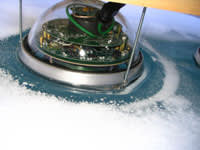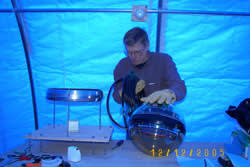Air showers in IceCube: Analysis of data from IceCube and IceTop

Elementary particles reaching Earth from outer space are signals from energetic astrophysical sources such as exploding stars and massive black holes. The high-energy particles, called cosmic rays, are accelerated by shock waves and other turbulent processes associated with the release of massive amounts of gravitational energy, which also lead to spectacular displays in visible light, X-rays, and other wavelengths of the electromagnetic spectrum. The focus of this research is on analysis of data that will lead to a better understanding of the specific types of sources and mechanisms that are responsible for the highest energy cosmic particles.

The IceCube Neutrino Observatory at the National Science Foundation's Amundsen-Scott South-Pole Station uses the clear, deep ice of the Antarctic glacier as a large target for detecting weakly interacting neutrinos, which are also expected from certain cosmic-ray sources, but which have so far not been found. IceCube includes an array of detectors on the surface that serve as a partial veto for the down-going background of penetrating muons created by cosmic-ray interactions in the atmosphere above IceCube.

The surface array, called IceTop, consists of 162 tanks of ice, each instrumented with two standard IceCube sensors, to detect showers of secondary particles generated by interactions of high-energy cosmic rays in the atmosphere. The analysis supported by this grant focuses on cosmic-ray events detected in coincidence by both the surface array and the deep detectors. The ratio of deep signal to surface signal can be used to measure the relative fraction of heavy cosmic rays (e.g., nuclei of iron) to light cosmic rays (e.g., protons) in an energy region not accessible to direct observation with detectors carried above the atmosphere on balloons or spacecraft. In particular we look for a characteristic signature of a transition from sources inside our Milky Way Galaxy to extra-Galactic sources at higher energy.
